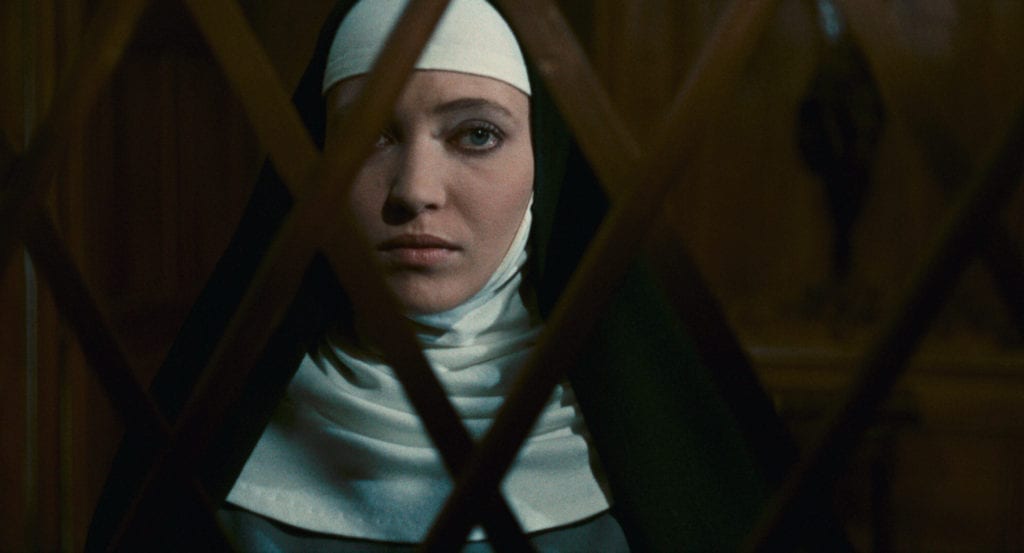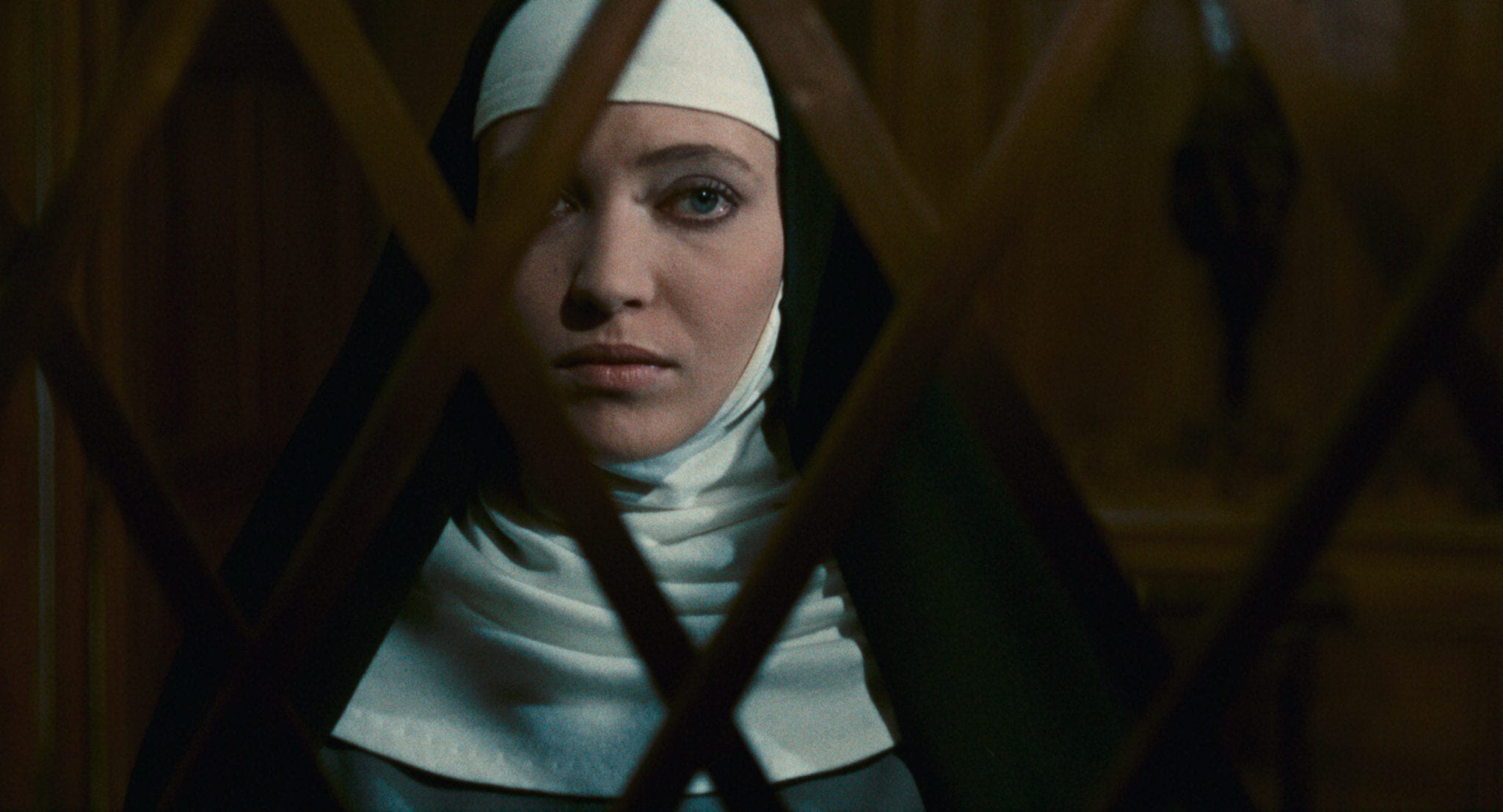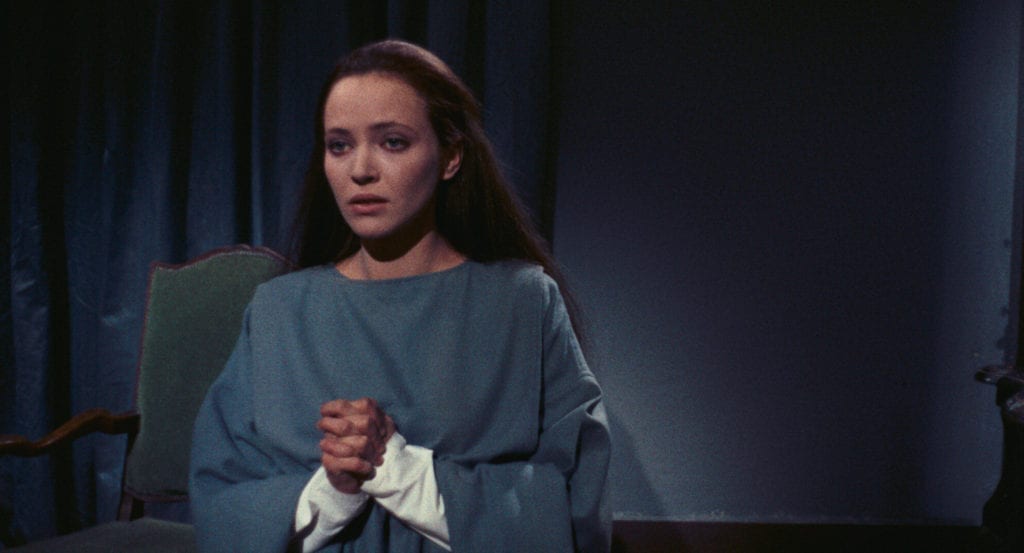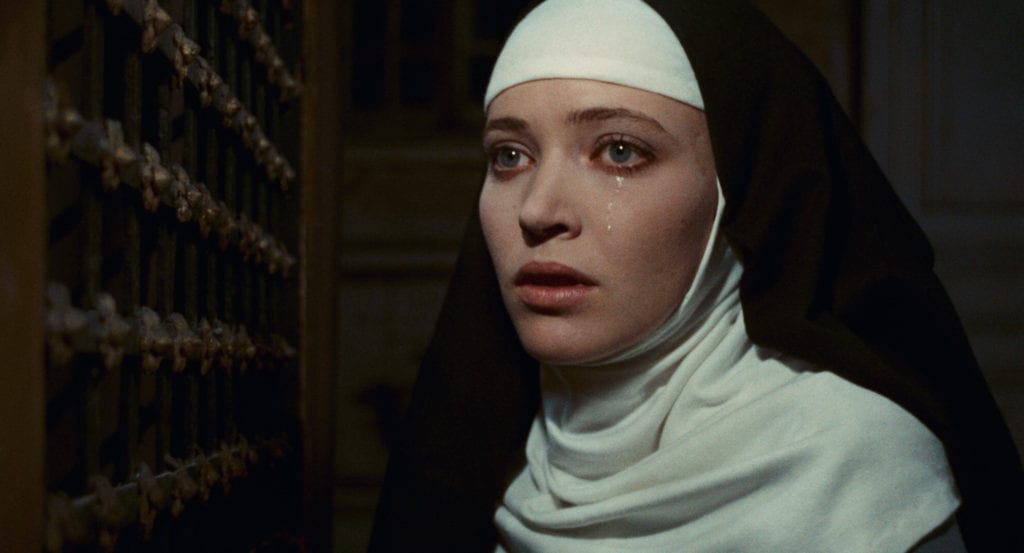Jacques Rivette?s La Religieuse (The Nun) was the center of controversy in France. Banned for over a year by the Minister of Information in 1965, the film was a battleground of the culture wars of the day. The restored version of the film, made from the original negatives, is now in select theaters.
The film is based on a novel by 18th century Enlightenment philosopher Denis Diderot. It is the story of Suzanne Simonin (Anna Karina), a young woman forced to take vows as a nun, but who is never happy in the convent. ?The film opens with Suzanne about to take vows, but she refuses. Sent home with her parents, she is punished and ignored because she was her mother?s illegitimate daughter. Suzanne?s sisters received large dowries assuring good marriages, but there is nothing for Suzanne. Her family convinces her that the religious life is her only option, even though she does not believe she has a vocation.

The film shows her struggles with convent life under three very different abbesses. The first is kind, and guides Suzanne to understand her place in the convent even without a vocation. This first abbess has her own set of doubts and troubles. But when she dies, the new abbess is authoritarian, vengeful, and seeks to break Suzanne?s spirit by harsh punishments. Suzanne sues, seeking to be released from her vows. Her suit is dismissed, but she is sent to another convent, one much different than the first.
The abbess at the new convent is much more liberal. She sees the convent a a place where each makes use of their gifts as they please. We notice the change of attitude as soon as we meet the new abbess?she has a frilly, haut couture, shapely habit. We also notice that the convent life here includes some intimate relationships. She has gone from a strict convent to a libertine one. The new abbess immediately falls in love with Suzanne, who tries to avoid such a relationship, but there is no escape for her, until her confessor arranges a chance to flee, but what can she do alone in the world?
You may see where some of the controversy came from. Many in the French Catholic Church didn?t want people getting the idea that this is what the religious life represented. They created a letter-writing and petition campaign that eventually lead to the film being banned by the Minister of Culture. That resulted in even more letters and petitions for the film?s release. After 13 months (and a change in Minister of Information), the film was released for adult viewing.
Was the controversy justified? The short answer is no, but let?s look at why I would say that (other than a default objection to censorship). The film (as part of the conditions for being released) carries an extensive disclaimer at the beginning:
Loosely based on a controversial book of the same name by Diderot, this film is the work of imagination. It does not claim to paint a true picture of religious institutions, even in the 18th century. The audience should place it in both a fictional and historical perspective, and refuse any hasty, unfair and indefensible generalization.
The film then has a voiceover explanation of Diderot?s inspirations that explains the historical context of convents in pre-Revolutionary France, when well-off families might send their daughters to convents rather than marry them off, and how some might even buy the office of abbess. This gives us a chance to understand a bit more of what is going on in the film.
The controversy was largely an overreaction. The film is not anti-religious or anti-church. On the contrary, those who express a true devotion (including Suzanne) are treated respectfully. But it also makes it clear that often people fall far short of the high calling of religious life.
The real issue in the film is not so much religion as it is freedom. For Suzanne, the problem is not that she doesn?t believe in God or the Church; she does not believe that the convent is where she belongs. She prays, but wants to do it because it is her prayer, not something that must be said at a given time. It is not the discipline that she objects to. Even in the second convent with its libertine ethos, she is not happy. She understands that a gilded cage is still a cage. What she truly wanted was her freedom. But sadly, even escape from the convent doesn?t bring true freedom because of the social strictures of the day.
All of this raises the issue of the ways religion can be either freeing or confining. There are those who would use religious teaching to force others to behave in certain ways. They expect rules to be followed and will denigrate or punish those who do not follow what they see as ?God?s way?. But for some, faith can be the way out of the constraints put upon them. To know that God?s love is a constant can set us free to live in new ways.
That is what makes the controversy over the film in 1965 so interesting. It serves as an example of some who used religion as a weapon against freedom. Those who opposed the film would have done well to understand the message of film.
Photos courtesy of Rialto Pictures/Studiocanal







